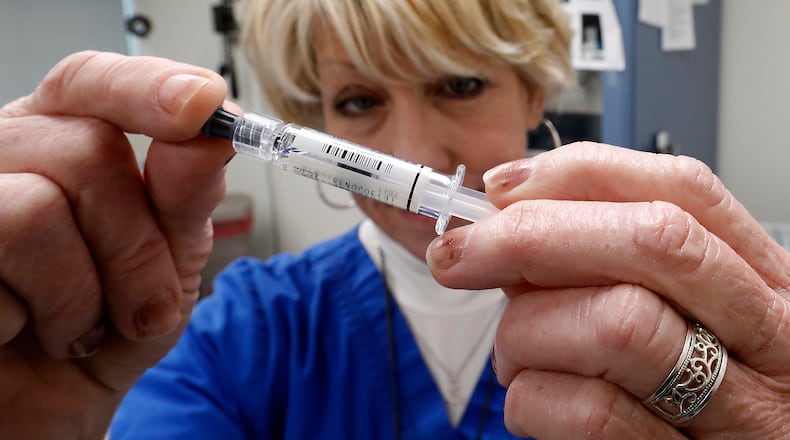However, it was still a milder season than the severe 2017-2018 season, when the flu led to more than 17,000 Ohio hospital stays.
MORE: 5 things to know about latest Ohio vaccine exemption bill
Pharmacies, primary care providers, clinics and some workplaces are all options for getting the vaccine.
Flu season begins each year as early as October, so public health officials said people should get the vaccine now since it takes two weeks from the time a person gets vaccinated until antibodies develop to help protect their body.
“If you say, ‘Well, I’m going to wait until the flu starts to start to appear in my area,’ you may well be too late,” said Dr. Mark Hurst, Ohio Department of Health medical director. “So now, time is of the essence.”
Some people are at particularly high risk for flu complications, such as those 65 years and older, young children, those who are pregnant, those with asthma, diabetes, cancer or HIV/AIDS.
Missy Fink, program manager of the Senior Emergency Department at Atrium Medical Center, said once a person turns 65 their immune system weakens and they’re more susceptible to flu-like symptoms. According to the Centers for Disease Control and Prevention, 70 to 90 percent of those who die every year from the flu are 65 and older.
Fink said a representative from the hospital’s infection control department told her one female in her mid-50s was admitted with flu symptoms in September, indicating it may be an early flu season.
Middletown Health Commissioner Jackie Phillips said along with getting vaccinated there are other “first lines of defense,” including staying home if possible if you are sick, covering your mouth and nose when you cough, eating healthy, getting proper sleep, drinking fluids and good hand-washing habits.
Tamiflu or its generic can be prescribed and taken within 48 hours of symptoms and helps make flu symptoms less severe.
It’s not possible to say in advance exactly how well the flu vaccine will work this season, or to predict with certainty if a flu vaccine will match circulating flu viruses, according to the CDC.
It’s possible to get sick with flu even if you have been vaccinated (although you won’t know for sure unless you get a flu test), the CDC stated, but the flu vaccination has been shown in some studies to reduce severity of illness in people who get vaccinated but still get sick.
U.S. Health and Human Services Secretary Alex Azar said at a press event kicking off the CDC flu vaccination campaign that flu vaccination coverage estimates for 2018-2019 that showed 45 percent of Americans adults got a flu vaccine last season, while nearly 63 percent of children were vaccinated.
RELATED: Ohio schools challenged by vaccine exemptions, data challenges
Adults 18 to 49 years old were the least vaccinated at 35 percent.
Vaccination among kids across all ages, 6 months through 17 years, was almost 63 percent— an increase of almost 5 percentage points from 2017-2018 and about 3 percentage points from 2016-2017. Coverage was highest among the youngest kids, (6 months to 4 years), at 73 percent, while about 52 percent of teens were vaccinated last season.
Looking at a longer-term trend, flu vaccination coverage in children 6 months through 17 years has increased more than 10 percentage points since 2010–2011.

